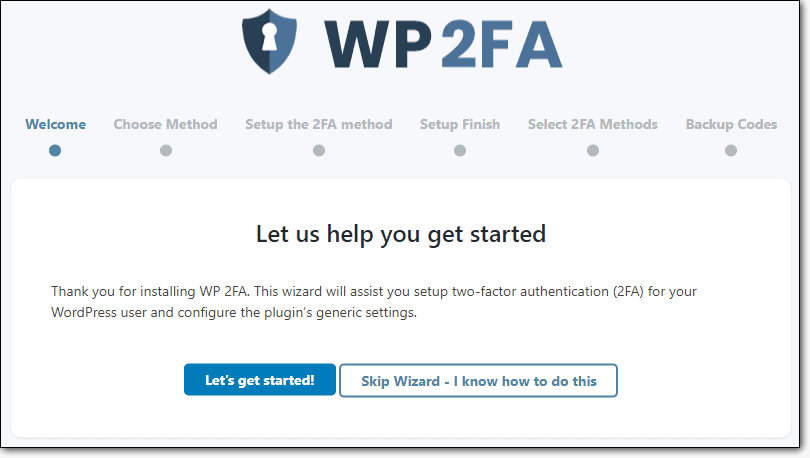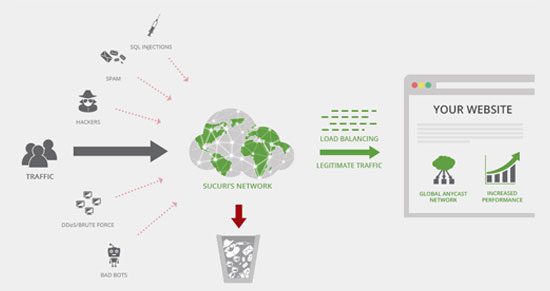Are you concerned about your WordPress website’s safety? WordPress Brute force attacks are a common threat. They can disrupt your site, steal passwords, and even install harmful software. It’s important to learn about and protect against these attacks to keep your website secure. Implementing strong passwords and using security plugins can help defend against such threats effectively. Today, we’ll talk about the brute force and learn how to prevent it.
What is a Brute Force Attack?

A brute force attack is a method used by hackers. Its goal is to gain unauthorized access to a system or account. Hackers try every possible combination of usernames and passwords. They continue until they find the correct one. This approach doesn’t rely on exploiting specific vulnerabilities. Instead, it relies on the sheer number of possible combinations. The process may take time. A successful brute force attack can pose a significant threat. This is particularly true if the targeted system or account contains sensitive information.
What Happens If A Brute Force Attack Is Successful?

If a brute force attack is successful, the hacker gains unauthorized access to the system or account. This means they can manipulate, steal, or delete data. They might also install malicious software or use the compromised account for further attacks. The consequences can be severe, ranging from financial loss to reputational damage.
Moreover, sensitive information might be exposed, leading to legal implications or regulatory fines. Therefore, preventing successful brute force attacks is crucial for maintaining security and trust.
The consequences could be –
- Unauthorized access to the system or account
- Manipulation, theft, or deletion of data
- Installation of malicious software
- Compromised account for further attacks
- Potential financial loss and reputational damage
- Exposure of sensitive information
- Legal implications or regulatory fines
Read More:
How To Prevent WordPress Brute Force Attacks?
Concerned about safeguarding your WordPress site? Learn how to prevent Brute Force Attacks on WordPress effectively. Implementing strong passwords, enabling two-factor authentication, and installing security plugins are key steps in fortifying your website’s defenses. Let’s learn the methods.
Step 1: Update your username
Updating your username is crucial for preventing brute force attacks as it makes it harder for hackers to guess your login credentials. Follow these steps to change your username:
- Log in to your WordPress dashboard.
- Navigate to the Users section and click on your profile.
- Change your username to something unique that’s not easily guessable, avoiding common names or terms.
- Save the changes.
Step 2: Use a strong password
Using a strong password is essential for securing your WordPress account against brute force attacks. Here’s how to set up a strong password:
- While still in your WordPress dashboard, navigate to your profile settings.
- Locate the password field and click on the “Generate Password” button.
- WordPress will generate a strong, random password for you. Copy this password.
- Alternatively, you can create your own strong password using a combination of uppercase and lowercase letters, numbers, and special characters.
- Paste the generated or chosen password into the password field.
- Save the changes.
Step 3: Add two-factor authentication

Two-factor authentication adds an extra layer of security to your WordPress login process. Follow these steps to set up two-factor authentication:
- Go to the Plugins section in your WordPress dashboard and click on “Add New.”
- Search for a two-factor authentication plugin such as “Two Factor” or “Google Authenticator.”
- Install and activate the plugin.
- Follow the plugin’s setup instructions to enable two-factor authentication for your WordPress login.
- Typically, this involves scanning a QR code with a two-factor authentication app on your smartphone and entering the code generated by the app to complete the setup.
Step 4: Install a brute force attack protection plugin
Installing a brute force attack protection plugin can help safeguard your WordPress site from unauthorized access attempts. Here’s how to install and configure such a plugin:
- In the Plugins section of your WordPress dashboard, click on “Add New.”
- Search for a plugin such as “Wordfence Security” or “iThemes Security.”
- Install and activate the chosen security plugin.
- Configure the plugin settings, specifically focusing on the brute force protection features.
- Enable options such as limiting login attempts, blocking IP addresses after multiple failed login attempts, and setting up CAPTCHA for additional verification.
- Save the settings and ensure the plugin is actively protecting your site from brute force attacks.
Other methods
You can apply other methods to prevent WordPress brute force attacks on your site. Let’s learn about them too.
Stay Updated with Regular Updates
Regularly updating WordPress, themes, and plugins is crucial. These updates often include security patches that fix vulnerabilities exploited by hackers. By staying up-to-date, you reduce the risk of brute force attacks gaining traction on your site.
Enhance Security with a Web Application Firewall (WAF)
Implementing a web application firewall (WAF) provides an added layer of defense against brute force attacks. A WAF can detect and block malicious traffic before it reaches your WordPress site, helping to thwart unauthorized access attempts.
Restrict Access with IP Whitelisting
Consider implementing IP whitelisting to restrict access to your WordPress admin area only from specific IP addresses. This way, even if a hacker manages to launch a brute force attack, they’ll be blocked from accessing the login page altogether if their IP address isn’t whitelisted.
Leverage Managed WordPress Hosting
Managed WordPress hosting providers often offer built-in security measures against brute force attacks. These may include server-level protections, automatic backups, and security monitoring. Choosing a reputable managed hosting provider can help fortify your site’s defenses against various threats, including brute force attacks.
Some Common Questions from the Audience

Why do hackers target WordPress?
Hackers target WordPress because of its widespread usage, making it a lucrative target. With millions of websites powered by WordPress, attackers have a larger pool of potential targets to exploit. Additionally, WordPress sites may have vulnerabilities due to outdated software, themes, or plugins, making them attractive targets for hackers seeking to gain unauthorized access, distribute malware, or carry out other malicious activities.
Do brute force attacks still work?
Yes, brute force attacks can still be effective, especially against websites with weak authentication mechanisms or poorly implemented security measures. While advancements in security technologies have made it more difficult for attackers to succeed with brute force attacks, they remain a persistent threat. Hackers may employ various techniques and tools to automate and scale their brute force attacks, increasing the likelihood of success.
Can WordPress be easily hacked?
WordPress can be vulnerable to hacking if proper security measures are not implemented. While WordPress itself is a robust and secure platform, vulnerabilities can arise due to factors such as outdated software, insecure passwords, poorly coded themes or plugins, and inadequate security configurations. However, with proactive security measures such as regular updates, strong passwords, and security plugins, WordPress sites can be made significantly more resilient to hacking attempts.
What is the largest danger in WordPress site security?
One of the largest dangers in WordPress site security is the risk of outdated software. Failure to regularly update WordPress core, themes, and plugins leaves websites vulnerable to exploitation of known vulnerabilities by hackers. These vulnerabilities can be exploited to gain unauthorized access, inject malicious code, or compromise user data. Therefore, keeping WordPress and its components up to date is crucial for maintaining site security.
Is WordPress hacked a lot?
WordPress sites can be targeted frequently by hackers due to their popularity. However, the actual frequency of WordPress hacks varies depending on factors such as the security measures implemented by website owners, the complexity of the attack surface, and the level of attention paid to site maintenance and security. While WordPress sites may be targeted more often compared to less popular platforms, proactive security measures can significantly reduce the risk of successful hacking attempts.
Is WordPress the most hacked CMS?
WordPress is often targeted by hackers due to its widespread usage, but whether it is the most hacked CMS depends on various factors and perspectives. While WordPress’s popularity makes it a prime target for attacks, other content management systems (CMS) may also face significant hacking threats. Ultimately, the security of any CMS depends on factors such as the implementation of security best practices, the diligence of site administrators, and the responsiveness of platform developers to address vulnerabilities.
How often are WordPress sites hacked?
The frequency of WordPress hacks can vary widely depending on factors such as the size of the website, its security posture, and the level of attention paid to site maintenance. While some WordPress sites may never experience a successful hacking attempt, others may be targeted frequently due to factors such as outdated software, weak passwords, or insecure configurations. Regular security audits, updates, and monitoring can help reduce the risk of WordPress hacks.
How vulnerable is WordPress?
WordPress, like any other software platform, can be vulnerable to security threats if not properly secured and maintained. Vulnerabilities may arise due to outdated software, insecure configurations, or poorly coded themes and plugins. However, WordPress also benefits from a large and active community that constantly monitors for security issues and releases updates to address them. By following security best practices and staying proactive about updates and maintenance, WordPress sites can be made significantly less vulnerable to attacks.
Frequently Asked Questions:
Q1: What is a WordPress Brute-force attack?
A1: A WordPress Brute-force attack is a method used by hackers to gain unauthorized access to a WordPress site by systematically trying every possible combination of usernames and passwords until the correct one is found.
Q2: How do WordPress Brute-force attacks work?
A2: Hackers use automated scripts to repeatedly attempt different combinations of usernames and passwords on a WordPress login page until they gain access. This process exploits the vulnerability of weak or easily guessable login credentials.
Q3: What are the consequences of a successful WordPress Brute-force attack?
A3: If a WordPress Brute-force attack is successful, the attacker can gain unauthorized access to the site’s admin panel. They may then manipulate content, steal sensitive information, install malware, or even take control of the entire website.
Q4: How can WordPress site owners prevent Brute-force attacks?
A4: WordPress site owners can prevent Brute-force attacks by implementing security measures such as using strong, unique passwords, limiting login attempts, enabling two-factor authentication, and installing security plugins specifically designed to protect against such attacks.
Q5: Are WordPress Brute-force attacks common?
A5: Yes, WordPress Brute-force attacks are relatively common due to the platform’s widespread usage. Hackers frequently target WordPress sites in search of vulnerabilities, making it essential for site owners to remain vigilant and implement robust security measures to mitigate the risk of such attacks.
Wrapping Up:
In conclusion, safeguarding your WordPress site against Brute-force attacks is essential for maintaining its security. These malicious attempts to gain unauthorized access pose significant risks to website owners. By implementing robust security measures and staying vigilant, such as using strong passwords and limiting login attempts, you can effectively mitigate the threat of WordPress Brute-force attacks. Prioritizing website security is crucial to defending against WordPress Brute-force attacks and ensuring the safety of your online platform.
